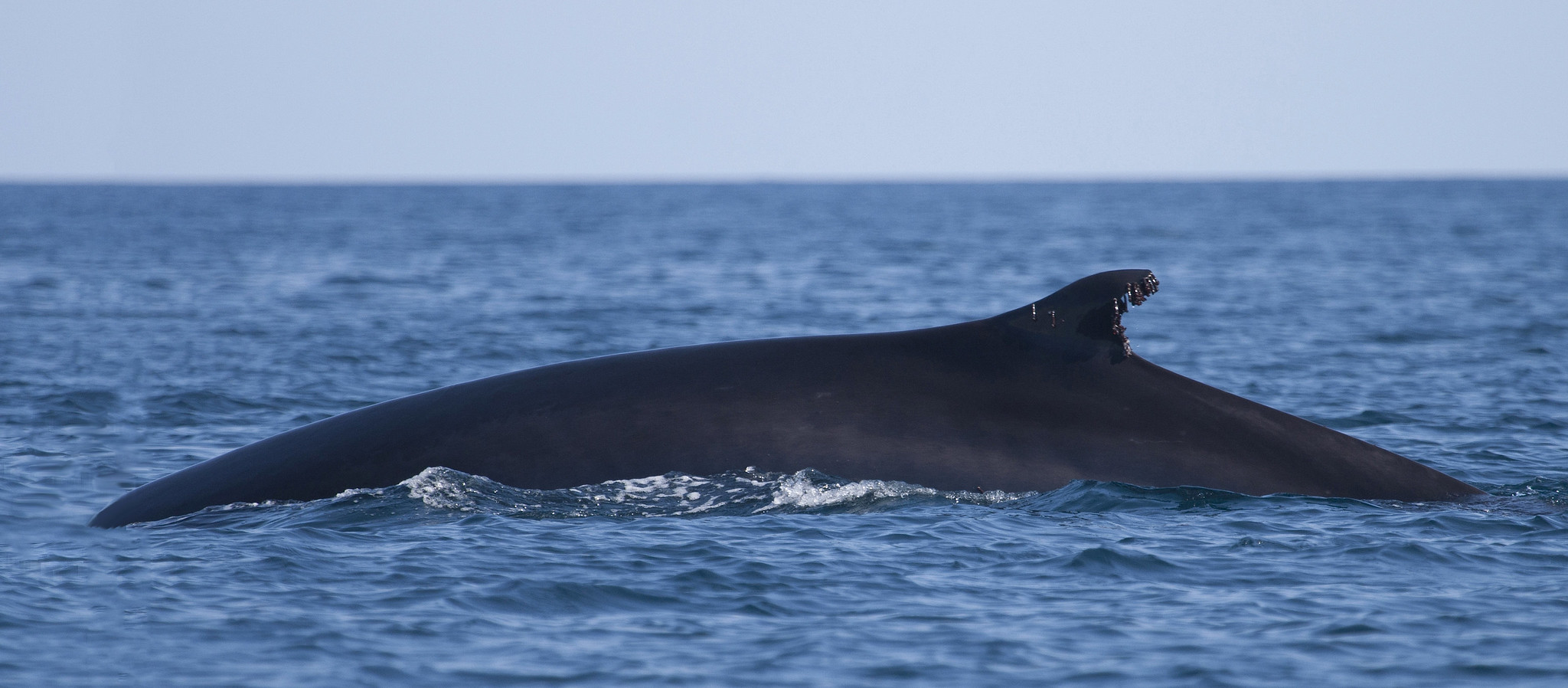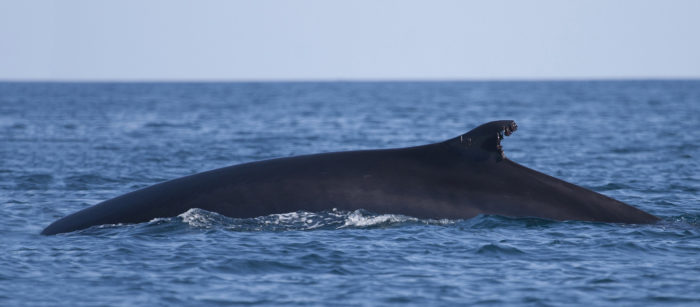
Sea Wonder: Fin Whale

Photo credit: Gregory Smith
Anyone can name the largest animal on earth, but can you name the SECOND largest? Read about the fin whale in this week’s Sea Wonder.
Appearance
The fin whale is the second largest mammal in the entire world, second only to the blue whale, the largest animal to ever live. The fin whale can reach up to 85 feet in length and between 40 and 80 tons in weight. They are baleen whales, which means they don’t have teeth, but baleen plates – comb-like structures made of keratin like our hair and nails. They have a V-shaped head and torpedo-shaped body, two large pectoral fins on their side for steering and stopping, and a pair of tail flukes to help propel them through the water.
Fin whales have a distinct ridge behind the hook-shaped dorsal fin on their dark grey backs, which has earned them the nickname of “razorbacks”. Their bellies are lighter in color and their jaw is uniquely colored: the right side is white and the left side is black.
Diet & Habitat
These gentle giants prey upon tons and tons of krill, some of the smallest animals on earth, and will occasionally eat cold-water fish like sardines, cod, herring, and mackerel. Fin whales are known as gulpers, which means they open their mouths and gulp up the water and anything in their path before closing their mouth, pushing water out through the baleen plates in their mouth, and swallowing whatever they caught. They can dive as deep as 1,800 feet and stay under water as long as 30 minutes.
Fin whales are migratory animals and are generally found in the open ocean all over the world. Two distinct populations exist: the northern population and the southern population, which indicates which hemisphere they reside in. Fin whales have been spotted across the National Marine Sanctuary System at various times of year, including the sanctuaries in the Atlantic and Pacific oceans and the Gulf of Mexico.
Life History
Fin whales are born in warm, tropical waters during the winter months (November to March in the northern hemisphere) after an 11-month pregnancy, and each female gives birth as frequently as every third year. Fin whale calves are about 20 feet long and up to 6,000 pounds at birth and will nurse from their mothers for about six months before learning to hunt in their summer feeding grounds. These whales reach maturity between six and twelve years of age and can possibly live to be as old as 80.
They are usually solitary or travel in small groups of three to seven individuals and communicate with body language like fin slaps or low-pitched sounds produced from their blowholes. They are one of the faster species of great whales that can reach top swimming speeds of 30 miles per hour but more often travel at about 18 miles per hour. They migrate annually, moving toward the poles in the summer to feed on cold-water animals, and then toward the tropics in the winter for breeding and mating.
Threats & Conservation
The fin whale’s only natural predators are killer whales and (sometimes) sharks, but like all marine mammals in the world, fin whales are under threat from a number of challenges. These include ship strikes, plastic ingestion, noise pollution, and decreased food availability due to overfishing and warming waters.
We can all do our part to protect fin whales by reducing our use of plastics, using less energy, choosing sustainable seafood, and supporting policies that protect marine mammal species in the United States and around the world.
